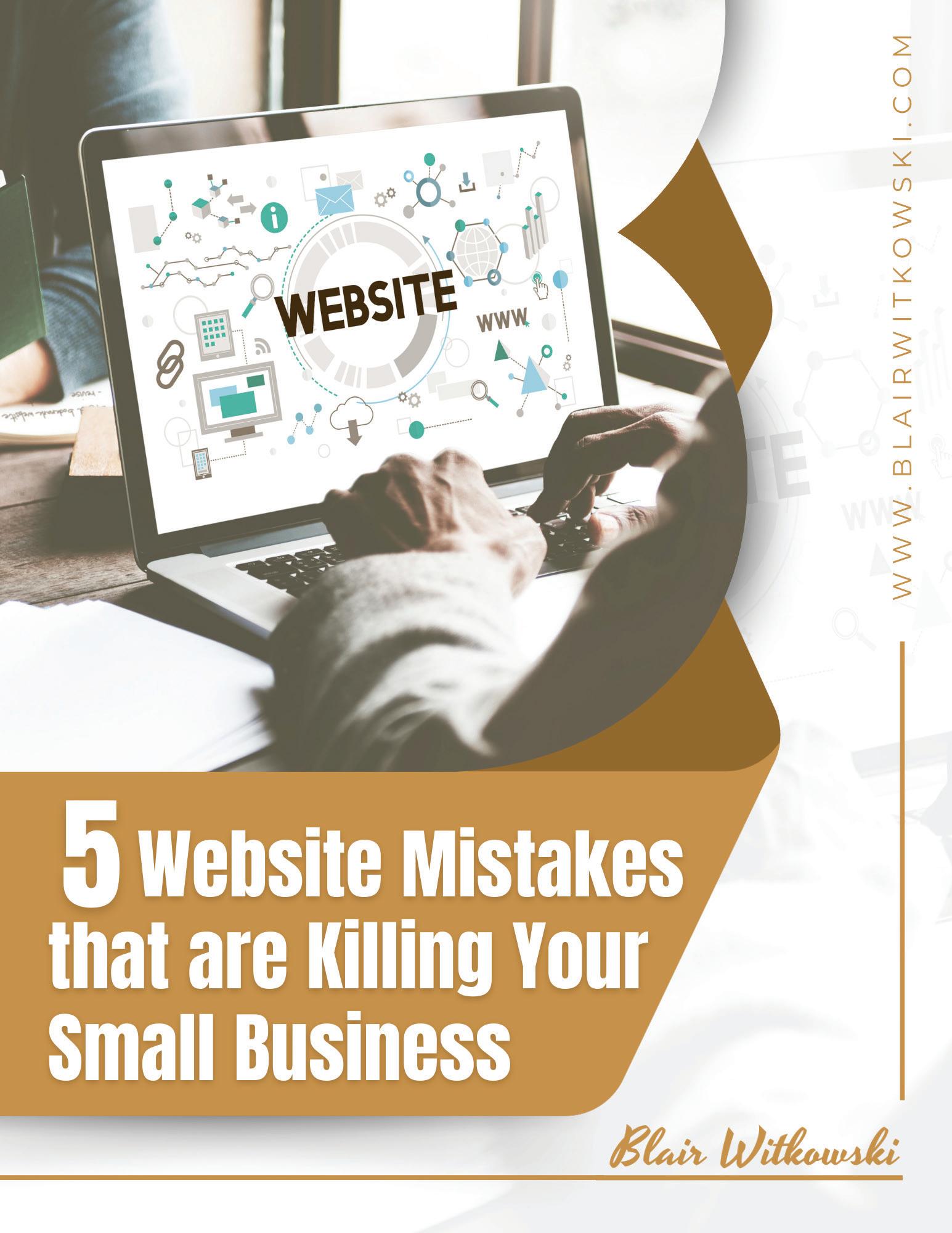

• Number One – Ignoring Local SEO
• Number Two – Not Having a Dynamic Site
• Number Three – Calling it Quits at the Website
• Number Four – Not Fully Utilizing Your Sales
Funnel
• Number Five – Doing the Bear Minimum
In the technological age, small business is evolving at a rapid pace. Business owners with no prior computer experience are required to build up an online website and profile just to stay competitive in the marketplace.
However, this isn’t a discipline that allows you to slap a logo on a web page and call it a day. Even without coding, website design is a multifaceted science that people spend years studying to master.
Thanks to the likes of WordPress, you don’t need to spend years studying design, nor do you have to hire a professional to have an effective small business website.
You can put something passable together using a template in your WordPress hosting manager. However, there are five specific critical errors that you need to make sure you avoid.

Number One – Ignoring Local SEO
Starting off with the single worst thing you can do with your small business website: ignoring local SEO is a great way to allow your competition free reign over the market.
SEO stands for ‘search engine optimization’ and is a method of using keywords and website structure to appear higher on the Google listings results page.
The reason that your local SEO is so important is that you have a very specific niche with a tiny level of competition when compared to an online, global business.
If you do roofing or servicing in, let’s say, Denver, Colorado, exclusively, then you need to capitalize on that market. Either create or pay for the creation of content that specifically targets people that search for a roofer in Denver.
Doing this is going to allow potential customers in your area to see your website, and therefore your conversion rate/number of jobs will skyrocket.

Number Two – Not Having a Dynamic Site
As time goes on, more and more people are using their mobile phones as their primary device for surfing the internet. Unlike a laptop screen or a monitor, a phone screen has limited space to use. This means that your website needs to be built dynamically so that it can fit and adapt itself to both screens. You don’t want a potential customer clicking onto your website, only to click off because they can’t read anything on their phone.
Making your website dynamic isn’t as difficult as you might think. A lot of the quality WordPress templates are dynamic by design.
A good way to test your site is to visit it both on a laptop and your phone and make sure that the website layout is customized for each device. If it isn’t, you need to go back to the drawing board and pick a new template.

Number Three – Calling it Quits at the Website
This tip isn’t exactly a website one, but it falls in the same ballpark. While we’re seeing a rise in the number of small businesses using a website, we do not see the same increase in social media usage. Your business website and social media are yin and yang and are both essential parts of your sales funnel.
You see, you have more exposure on social media and access to a larger number of potential customers. You can entice these customers with your posts, maybe pictures of the job you’re on. They read your description, which has a CTA (call to action) prompting them to visit the link in your profile.
They do that and arrive on your website, at which point….



